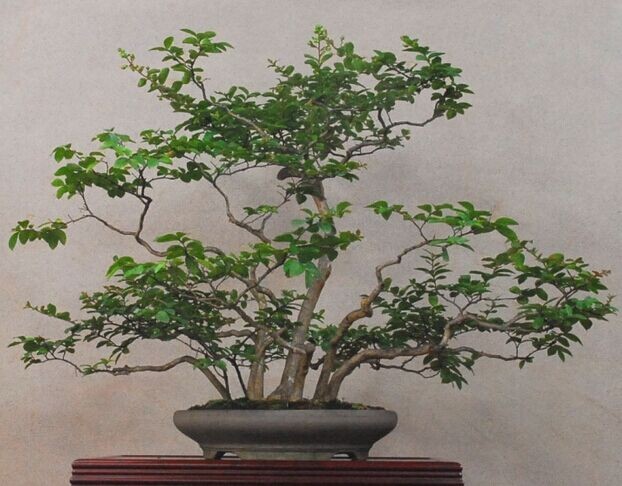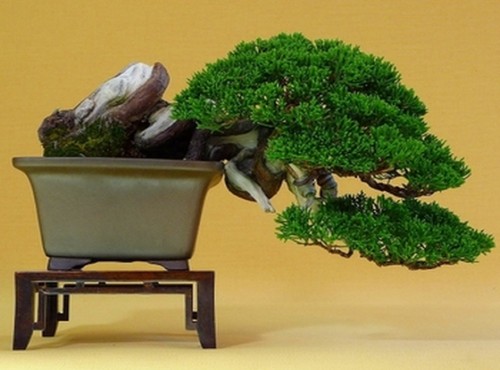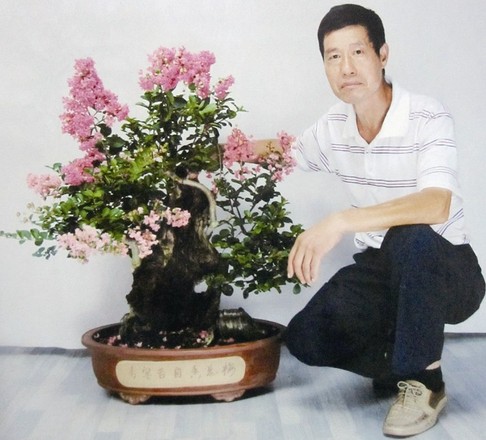The method of pruning and shaping of crape myrtle bonsai
Crape myrtle is resistant to pruning, strong branching ability and large shoot growth. Therefore, the residual flowers should be cut off after flowering, which can prolong the flowering period and cut off the overgrown branches, overlapping branches, crossed branches, radiant branches and diseased branches at any time so as not to consume nutrients.

Pruning and shaping:
1. The general pruning and shaping of crape myrtle bonsai should be based on the need of bonsai shaping after defoliation, and 1-2 buds per branch should be re-cut.
2. In the growing season, pruning mainly removes dense branches, overgrown branches that go around the tree shape, and worthless branches germinated on the basal stem, which should be erased or cut off in time.
3. In order to make crape myrtle bonsai blossom many times and bloom well within a year, the residual flowers should be removed in time after each flower shedding, so as to prevent fruit, promote the rapid expansion of secondary buds and blossom many times, but the flowering period is not neat first and then not neatly. In addition, if there are not many secondary buds after the flower fade, each branch leaves 1-2 buds for re-pruning, generally 14 days to show buds, 35 days or so can be full of trees and flowers, which can make crape myrtle bonsai branches thicker and shorter (the average branch length is less than 15 cm), the tree shape is very compact, and the flowers are colorful and pleasing to the eye.
4. Pull branch, support branch, take branch.
These three techniques are mainly from May to October, according to the modeling needs of crape myrtle bonsai, regulate and control the branches of crape myrtle bonsai, increase and control the angle of branches, and adjust the angle of branches at will, so as to concentrate nutrients and accumulate nutrients. especially when some branches of crape myrtle bonsai are pulled, supported and used, some of the branches are arched. Many very short twigs (less than 10 cm) grow on its arched back, which not only greatly increases the number of flowering branches and buds, but also the color of crape myrtle is very beautiful.
Time: 2019-06-13 Click:
- Prev

Notes on Fertilization of Pine Bonsai
After applying organic fertilizer for a few days, white mycelium can often be seen growing from the fertilizer, which is mostly considered to be that the fertilizer is not completely decomposed. After decomposition, the raw material will become powder. For some reasons (maybe bagging, ease of application, aesthetics, etc.), the manufacturer will make the fertilizer into granules. In this process,
- Next

Fertilization skills of crape myrtle bonsai
Crape myrtle should apply a slightly thicker organic fertilizer as base fertilizer after autumn, but generally speaking, crape myrtle pile should not apply heavy fertilizer to prevent branches from growing too much. When applying crape myrtle, attention should be paid to the combined application of nitrogen and phosphorus fertilizer. Rotten fertilizer is applied every half a month during the growing period. Nitrogen fertilizer should be applied once after each pruning.
Related
- Fuxing push coffee new agricultural production and marketing class: lack of small-scale processing plants
- Jujube rice field leisure farm deep ploughing Yilan for five years to create a space for organic food and play
- Nongyu Farm-A trial of organic papaya for brave women with advanced technology
- Four points for attention in the prevention and control of diseases and insect pests of edible fungi
- How to add nutrient solution to Edible Fungi
- Is there any good way to control edible fungus mites?
- Open Inoculation Technology of Edible Fungi
- Is there any clever way to use fertilizer for edible fungus in winter?
- What agents are used to kill the pathogens of edible fungi in the mushroom shed?
- Rapid drying of Edible Fungi

